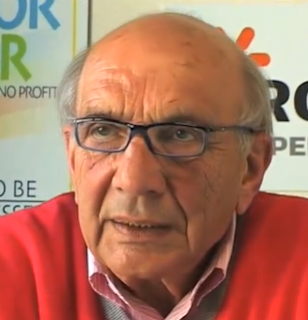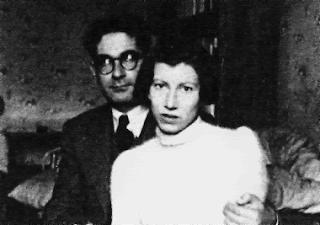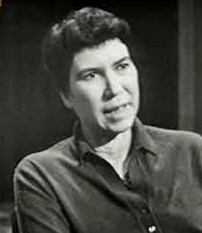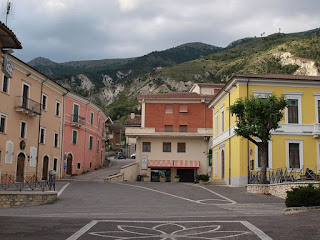Former salesman known as inventor of Kinder Eggs
William Salice, the man credited with being the inventor of the enormously popular children’s confectionery known as Kinder Eggs, was born on this day in 1933 in Casei Gerola, a small town in Lombardy, southwest of Milan.
William Salice worked for the Ferrero company
for almost half a century after joining them in 1960
Salice worked for the chocolate and confectionery company headed by Michele Ferrero, which had already enjoyed considerable success thanks to the Nutella hazelnut chocolate spread launched in the 1960s.
Keen to better himself after joining Ferrero as a salesman in 1960 at the age of 27, Salice studied marketing in his spare time, aware that Italy needed to make up ground on some other western countries in that area of business.
His willingness to embrace new ideas impressed Michele Ferrero, who commissioned him to come up with a way of turning the popularity in Italy of children’s chocolate Easter eggs into a product that could be sold all year round, with the added benefit that the moulds used to produce eggs at Easter did not need to be dismantled and stored away once the Easter holiday had passed.
Salice came up with the Kinder Sorpresa - a chocolate egg but with the extra appeal that each one came with the surprise - sorpresa - of a free gift contained inside a plastic shell within the egg. He chose Kinder - the German for children - for the name because Germany was expected to be an important market for the product.
 |
| The Kinder Egg's packaging is familiar the world over |
The gifts inside were often traditional toys, such as spinning tops, dolls, plastic soldiers or model cars, sometimes needing the help of an adult to assemble, something Salice saw as a way to promote interaction between parents and their children.
The product was an immediate success, which Salice put down to the relative poverty of many Italians even in the 1970s, when toy stores were virtually non-existent in the country. The hand-painted figurines in particular were hugely popular. At Christmas, Ferrero produced versions that came with tiny nativity sets.
In time, the product’s popularity saw Ferrero link with companies in the entertainment industry to produce themed toys based on popular films or TV shows, or cartoon characters. Themed series based on Smurfs and Asterix, for example, were exceptionally popular and increased sales exponentially as children - and adults - set out to acquire complete collections of each line.
The small size of the toys raised concerns over safety, particularly given that a non-edible product was being concealed within something edible, and there were a number of incidents of children choking on the toys. Some countries banned Kinder Eggs altogether; others required changes to packaging and clearer warnings displayed.
 |
| Salice had the idea to include a free toy inside the Kinder Egg's chocolate shell |
Salice also played a key role in developing the company’s best selling Ferrero Rocher chocolates, Tic-Tac mints and Pocket Coffee, which comprises a hollow square of hard, dark chocolate containing a shot of sweetened espresso coffee.
Salice grew up in a postwar Italy that was still struggling to recover economically. Despite limited opportunities to enjoy a proper education, he studied for a diploma in commerce at Voghera, near Pavia.
He spent almost half a century working for Ferrero, and in retirement devoted much time and money to helping future generations of Italians to realise their potential via his Color Your Life foundation - set up jointly with Italian entrepreneur Enrico Gasperini - which has a campus near Savona that offers courses for talented children with artistic, academic and entrepreneurial ambitions and helps young people to make the contacts which, in Italy, are still often fundamental to personal advancement.
A keen supporter of Inter-Milan away from work, he died in December 2016 at the age of 83.
Travel tip:
An etching depicting the Castello di Casei
Gerola in medieval times
Casei Gerola is a small town in Lombardy some 60km (37 miles) southwest of Milan and about 25km (16 miles) from Pavia. It is the home of the Castello di Casei Gerola, built in the early 15th century on the site of an existing structure that dates back to the 10th century, and substantially rebuilt in the 16th century after it suffered damage inflicted by Spanish forces. A large, brick construction, it has a central courtyard and the remains of four towers are still visible. Just outside Casei Gerola is the natural park of La Folaghe, a flooded quarry that has become home to a host of wildlife, including many species of birds.
Travel tip:
Voghera's imposing 17th century duomo was
inspired by Bramante's design of Pavia cathedral
Voghera, where Salice studied commerce, has a castle erected by the Visconti family between 1335 and 1372 and an 11th century cathedral later remodelled in Baroque style. It is famous for the term 'Casalinga di Voghera' - Voghera housewife - which is often used in the media and political discourse to refer to the average Italian citizen - not particularly well educated or sophisticated but working hard and striving through self-sacrifice to raise a family in the best way possible. In England, an equivalent but now somewhat archaic phrase is 'the man on the Clapham omnibus', which was once regularly used in courtrooms to represent someone whose hypothetical opinion might determine whether an action was or was not reasonable. Voghera's duomo was rebuilt in the 17th century to a design by Antonio Maria Corbetta who was inspired by the Bramante layout of the Pavia cathedral.
Also on this day:
1610: The death of Renaissance master Caravaggio
1871: The birth of painter Giacomo Balla
1884: The birth of Cardinal Alberto di Jorio, head of the Vatican Bank
1914: The birth of three-times Giro d’Italia winner Gino Bartali
Home






















